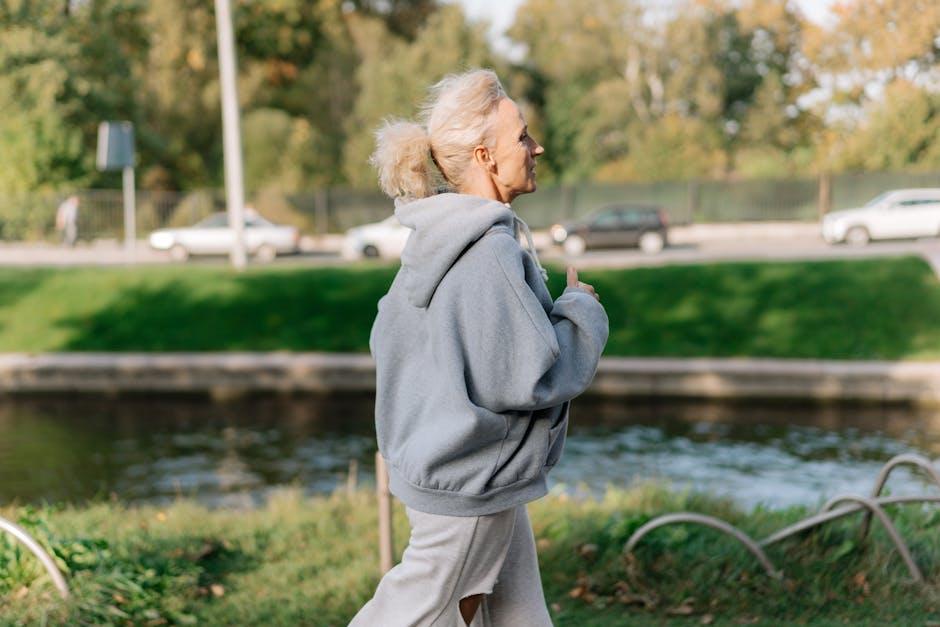Should Grey Hair Be Embraced Over Hair Coloring
In a world where beauty standards are as diverse as the hues of a sunset, the conversation around hair color is taking center stage. The age-old debate of whether to embrace one’s natural grey hair or to indulge in the vibrant world of hair coloring is a topic that touches on identity, self-expression, and societal expectations. As the silver strands of wisdom begin to weave their way into our lives, they bring with them questions about authenticity, age, and the allure of change. This article delves into the multifaceted perspectives on grey hair, exploring the cultural, personal, and aesthetic dimensions of choosing to embrace one’s natural hue versus opting for a splash of color. Whether you’re a steadfast supporter of silver or a champion of change, the dialogue around grey hair is as rich and varied as the people who wear it.
Embracing the Silver: A Cultural Shift in Beauty Standards
In recent years, there has been a remarkable transformation in the way society perceives aging, particularly when it comes to hair. The once-dominant narrative that promoted hair coloring as a means to conceal grey has started to wane. Instead, many are now choosing to embrace their natural grey hues as a celebration of authenticity and individuality. This shift is fueled by several factors:
- Representation in Media: An increasing number of public figures and influencers proudly display their silver strands, challenging traditional beauty norms and inspiring others to do the same.
- Health and Wellness: Concerns about the chemicals used in hair dyes have led some to forgo coloring in favor of maintaining their hair’s natural health.
- Cultural Acceptance: The growing acceptance of grey hair in professional and social settings has made it easier for individuals to confidently showcase their natural look.
While the decision to embrace grey hair is deeply personal, it is clear that a cultural shift is underway. The conversation around beauty standards is evolving, and with it, the understanding that beauty is not defined by age or color but by confidence and authenticity.

The Science Behind Going Grey: Health and Hair Care Benefits
Going grey is often perceived as a natural part of the aging process, but there’s more science behind it than just the passage of time. As we age, our hair follicles produce less melanin, the pigment responsible for hair color, leading to the appearance of grey or white hair. However, embracing your natural grey can offer several health and hair care benefits. Grey hair is generally stronger and more resilient than dyed hair because it hasn’t been subjected to the harsh chemicals found in hair dyes. These chemicals can weaken hair strands, leading to breakage and split ends.
- Reduced Exposure to Chemicals: Choosing to go grey means minimizing the use of hair dyes, which often contain ammonia, peroxide, and other potentially harmful substances.
- Lower Risk of Allergic Reactions: Hair dye allergies can cause itching, redness, and even severe reactions in some individuals. Embracing grey hair eliminates this risk.
- Healthier Scalp: Frequent coloring can irritate the scalp and strip it of natural oils, leading to dryness and flakiness. A natural grey mane allows your scalp to maintain its natural balance.

Balancing Personal Identity: The Emotional Journey of Grey Hair
The decision to embrace grey hair can be an intensely emotional journey, deeply intertwined with one’s personal identity. For some, grey hair symbolizes wisdom and maturity, a natural badge of honor earned through life’s experiences. Others might view it as a stark reminder of aging, prompting a complex internal dialogue. Navigating this emotional landscape often involves balancing self-acceptance with societal expectations. While some individuals find empowerment in displaying their natural hair color, others may feel pressured to conform to beauty standards that favor youthfulness.
- Acceptance: Choosing to go grey can be an act of self-acceptance, embracing one’s authentic self without the need for disguise.
- Individuality: It offers a chance to redefine personal style, challenging conventional norms and creating a unique aesthetic.
- Confidence: Embracing grey hair can boost confidence, as it reflects a personal choice and a break from dependency on chemical treatments.
Ultimately, whether to color or embrace grey hair is a deeply personal decision. It requires introspection and courage, as it touches on themes of self-worth and societal pressure. This journey, while personal, is a shared experience that resonates with many, fostering a sense of community and understanding among those navigating similar paths.

Practical Tips for Transitioning to Natural Grey Hair
Embracing your natural grey hair can be an empowering journey, and there are several practical tips to make the transition smoother. Start by consulting with a professional hairstylist who understands the nuances of going grey gracefully. They can suggest techniques like lowlights or highlights to blend your natural grey with your existing hair color, creating a more seamless transition. This approach helps maintain a polished look while reducing the stark contrast that can sometimes occur during the growing-out phase.
Additionally, consider incorporating a few changes to your hair care routine. Use shampoos and conditioners specifically formulated for grey hair, as these products can enhance shine and reduce any unwanted yellow tones. Hydrating masks and leave-in conditioners are also beneficial, as grey hair tends to be drier and more prone to frizz. Lastly, embrace the beauty of your changing hair texture by experimenting with different styles and cuts that complement your new hue, such as chic bobs or soft layers. The key is to celebrate the natural elegance that comes with this new chapter of your hair journey.
In Conclusion
In the grand tapestry of self-expression, the strands of grey hair weave a narrative as compelling as any vibrant hue from a bottle. Whether one chooses to embrace the silvery dance of time or opt for the artistic flourish of color, the decision remains deeply personal, echoing individual stories, experiences, and values. In a world that constantly evolves, so too do our perceptions of beauty and identity. As society leans towards authenticity and acceptance, perhaps the true essence lies not in the color itself but in the freedom to choose. Whether you find empowerment in natural greys or joy in a kaleidoscope of shades, the journey is uniquely yours to define. As we close the chapter on this exploration, let us celebrate the diversity of choices and the beauty that emerges when we honor our own paths.


